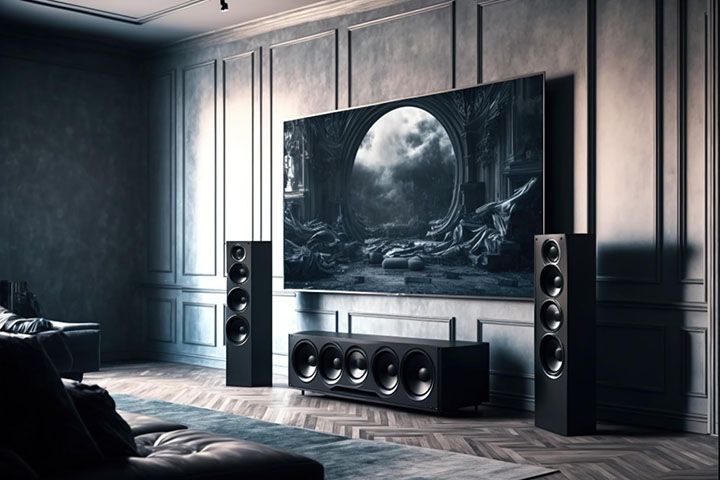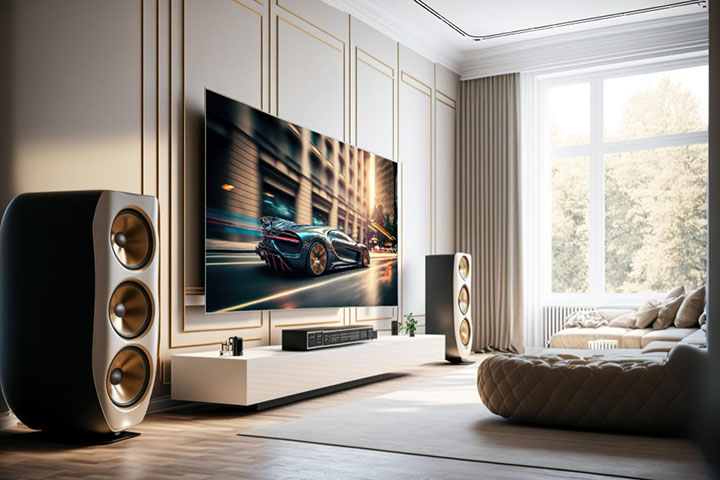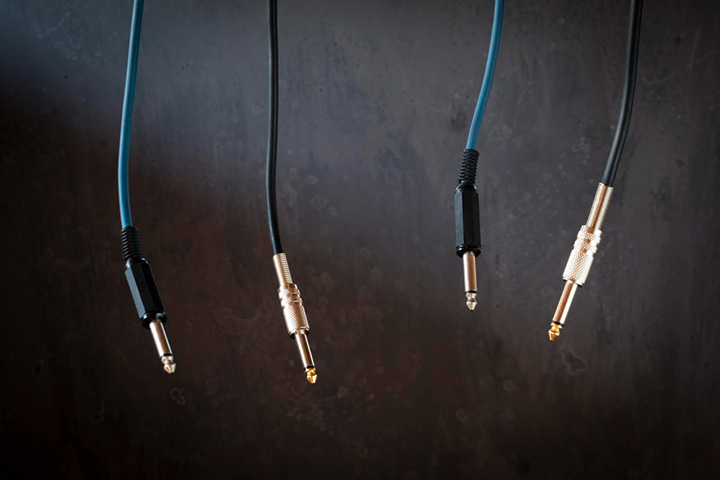Imagine being able to truly immerse yourself in movies, shows, and games without HDMI cable constraints. What if you could easily sync your TV’s audio with your powerful home theater setup using simple cables or wireless connections?
Stop settling for tiny built-in speakers – experience audio nirvana by learning how to connect TV sound to home theater without HDMI. This guide unlocks the secrets to routing your TV’s sound to your home theater – no HDMI required.
From analog cables to cutting-edge streaming tech, we’ll dive into methods to pump heart-thumping audio through glorious surround sound speakers. Immersive 3D soundtracks, earthshaking bass, crystal-clear dialogue – hear it all with richness it deserves.
This isn’t just instructions; it’s an audio adventure with tips and tricks to enhance your pleasures. Prepare to be amazed by what your TV can really sound like without HDMI!

How to Connect TV Sound to Home Theater Without HDMI
Connection options
For connecting your TV’s audio to a home theater system without HDMI, you have three main options: optical digital audio, RCA analog cables, or a 3.5mm aux cable. Optical provides the best sound quality by transmitting audio digitally. RCA cables (red and white) are an analog option with decent quality.
The aux cable uses the headphone jack for basic analog audio output. Keep in mind that optical cables have a longer supported cable length compared to analog RCA or aux options. Also, check the manuals to ensure your specific devices list the desired connection type as a compatible option.
Setup process
Whichever connection type you choose, ensure your TV and home theater support the necessary ports by checking their specs. Connect the appropriate cable to the matching ports on each device.
Then adjust your TV’s audio settings to enable digital audio output (optical), external/analog speakers (RCA), or audio system/headphone output (aux). An optical connection is preferable if both devices are compatible, otherwise RCA or aux will work sufficiently.
Don’t forget to select the proper audio format like bitstream or PCM if using an optical connection. For analog connections, you may need to set your TV speakers to external audio or disable the internal TV speakers.
Connecting the TV Sound to Home Theater
Connection methods
As mentioned, the main methods for connecting your TV’s audio to a home theater system without HDMI are optical digital audio cable, RCA analog cables, and 3.5mm auxiliary cable.
For optical, plug the cable into the respective optical ports on both devices and enable digital audio output on your TV. For RCA, connect the red and white cables to the colored ports, then select external speakers in your TV’s audio settings.
For the aux method, plug the cable into your TV’s headphone jack and the home theater’s aux input, and choose the option to send audio to an external device.
The optical connection provides the best audio quality by transmitting the signal digitally. RCA is still a good option for analog audio, though aux will be the lowest quality.
Setup and testing
Regardless of connection type, reference your TV and home theater manuals for specific port locations and menu settings. Check if your TV requires enabling options like HDMI audio output support for the alternative connections to work.
Once connected, play sample video and audio to test if the sound is outputting properly through the home theater. Adjust volume levels on both the TV and audio receiver as needed.
If you encounter any issues, double-check that all cables are properly plugged in and the correct audio settings are enabled. It may also help to power cycle both devices after making the new connection.
How to Connect TV to Amplifier Without HDMI
While HDMI is the most common and convenient way to connect a TV to an amplifier or home theater system, there are several alternative methods you can use if your devices don’t have HDMI ports or if you want to try a different connection type.
In this guide, we’ll discuss how to connect your TV to an amplifier without HDMI using RCA cables, optical audio cables, and 3.5mm aux cables.

Connecting TV to amplifier using RCA cables
- Locate the RCA audio outputs on your TV (red and white cables) and the corresponding RCA audio inputs on your amplifier.
- Connect the red RCA cable from the TV’s red audio output to the amplifier’s red audio input.
- Connect the white RCA cable from the TV’s white audio output to the amplifier’s white audio input.
- If you want to transmit video from the TV to the amplifier, you’ll also need to use the yellow RCA cable to connect the video outputs and inputs.
- On your TV and amplifier, select the appropriate RCA inputs as the audio/video source.
Connecting TV to amplifier using optical audio cable
- Check if your TV and amplifier both have optical digital audio ports (they look like rounded squares).
- Connect one end of an optical audio cable to the TV’s optical audio output.
- Connect the other end to the amplifier’s optical audio input.
- On both devices, enable the optical audio output/input in the audio settings menu.
- Optical audio transmits audio digitally for better sound quality than analog RCA cables.
Connecting TV to amplifier using 3.5mm Aux cable
- Locate the 3.5mm headphone jack on your TV and the 3.5mm aux input on your amplifier.
- Plug one end of a 3.5mm aux cable into the TV’s headphone jack.
- Plug the other end into the amplifier’s aux input jack.
- On your TV, change the audio output settings to send sound to the headphone jack.
- On the amplifier, select the aux input as the audio source.
- Note that aux provides the lowest sound quality of these options.
No matter which non-HDMI method you choose, be sure to adjust your TV and amplifier’s audio settings appropriately for the connected inputs and outputs. Explore each option to find the best balance of audio quality and connection convenience for your setup.

Configuring the Home Theater System
Configuring your home theater system properly after connecting your TV’s audio is essential for optimal performance. Access the input menu and select the connection type (optical, RCA, aux) you used. For digital audio, match the format setting to your TV’s output like Dolby or PCM.
Enable any audio processing modes that can improve your TV’s stereo sound. Run the speaker setup to calibrate levels, distances, and crossovers for accurate sound distribution. Refer to the instruction manual for thorough setup guidance from the manufacturer.
Once configured, test audio playback and fine-tune any additional settings like speaker levels, bass, treble, or audio delays. Adjust these settings to get the ideal sound quality from your home theater with the TV’s audio source.
Conclusion
As we conclude, we have shared multiple approaches on how to connect TV sound to home theater without HDMI for an immersive experience. While HDMI is convenient, optical digital audio, RCA cables, and 3.5mm aux connections are viable alternatives. The key is ensuring device compatibility and adjusting audio settings properly.
Following the provided guides, you can now confidently set up an optical, RCA, or aux cable to play your TV’s audio through your home theater system.
With some effort, you can enjoy an enhanced audio experience without HDMI. Explore these methods for connecting TV sound to home theater without HDMI to unlock the full potential of your audio setup.

